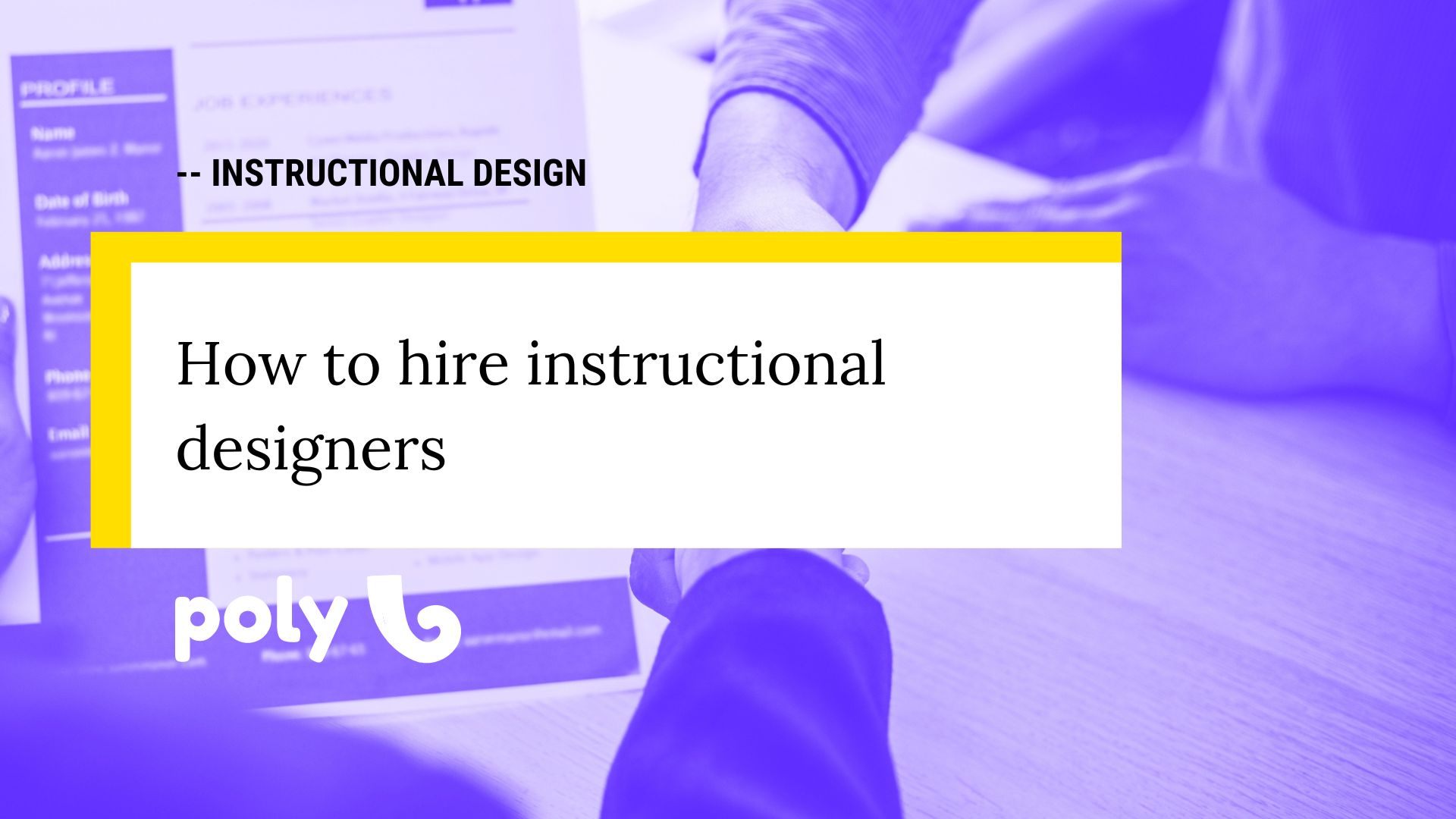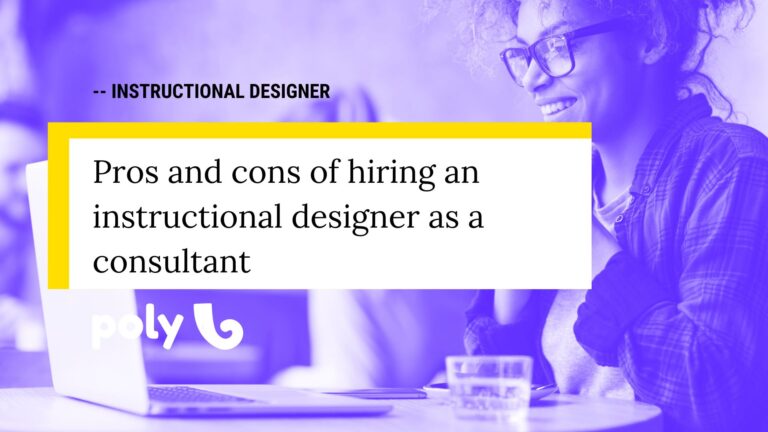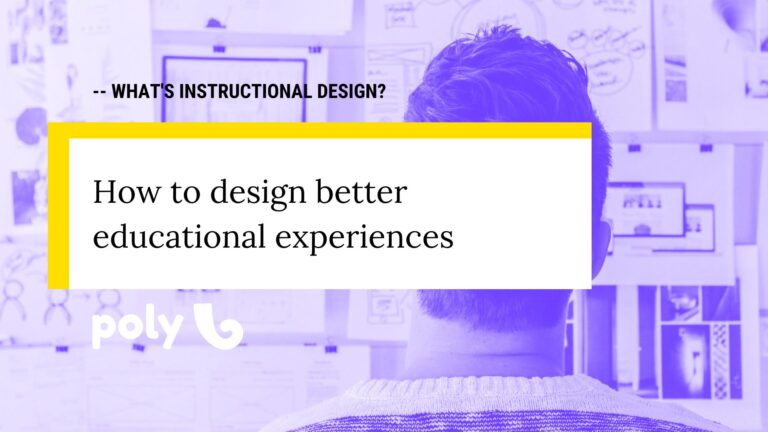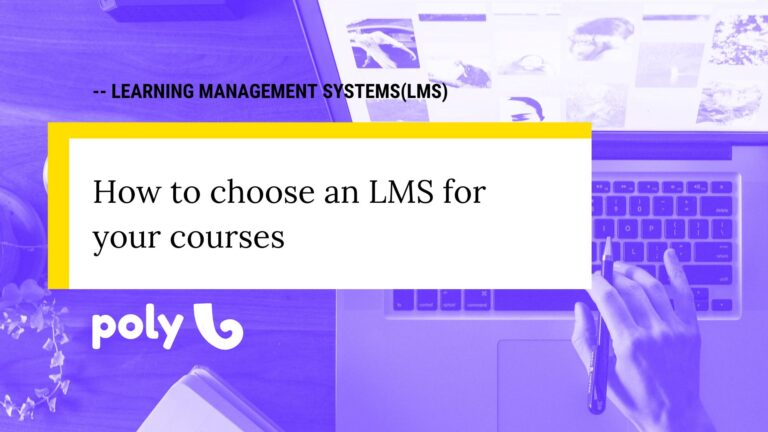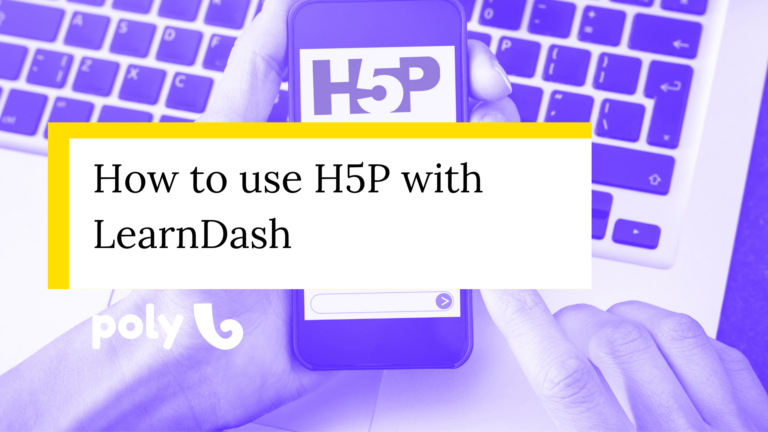How to hire instructional designers for your company
Hiring instructional designers can be challenging because it’s a specialized field that requires insider knowledge to make the right choice. Many people in education leadership or those responsible for implementing online courses for employees or clients study instructional design to navigate through it.
Here, you’ll receive tips on what characteristics to look for when hiring a suitable candidate to work as an instructional designer for your company, whether as a freelancer or full-time employee.
How to hire remote instructional designers.
Good instructional designers can be hard to find due to the ongoing shortage in the education sector. Finding instructional designers who specialize in your industry adds another layer of difficulty since teaching strategies can vary significantly for different fields like healthcare, sports, or technology, to name a few.
Moreover, if you require in-person activities, the challenge becomes even greater.
If you’re looking for an instructional designer who specializes in a specific field and is also in your city, don’t hesitate to consider a remote position.
Good instructional designers are either already well-employed at reputable companies or have their own businesses, thanks to remote work’s flexibility in our lives. I personally made that transition in 2020 by choice.
Still not clear on what instructional design is? Click here to find out.
Characteristics of top instructional designers.
Most experts agree that unique qualities are required for instructional designers to be considered good. Some of the key skills in demand in the education market include:
- Project and people management.
- Knowledge of learning management systems (LMS) and technology in general.
- Above-average interpersonal and communication skills in dealing with multiple stakeholders.
- Instructional design concepts as they apply to adult learning.
- Knowledge of agile development techniques and practical experience in business, not just academia or traditional educational institutions.
These are just the basics of what makes a qualified instructional designer in a standard role. Now, imagine what it’s like for an instructional designer working on a high-level project with tight deadlines.
When hiring instructional designers, it’s important to ensure that each candidate possesses at least most of the above characteristics. Additionally, it’s important to verify the actual level at which the instructional designer works. Every competent instructional designer will have a portfolio to showcase their work. Consider it a red flag if someone claims that their work was “internal” and cannot be shown.
There are many differences among instructional design professionals: one instructional designer may be accustomed to working with an internal team that is highly collaborative, while another may be used to working with subject matter experts. A remote instructional designer should have a track record of creating effective courses under these conditions.
Ask about their experiences and involvement in projects. After all, an online course implementation project can involve multiple parties, and rarely will an instructional designer have been solely responsible for everything.
Finding the best instructional designers.
As recruiters or individuals responsible for implementing an educational component in your company, it’s normal to have many doubts when recruiting an instructional design professional for the first time.
Here are some of our recommendations for finding top-notch instructional design candidates for opportunities in your company, whether as freelancers or full-time employees.
Choose candidates who are active in the learning community.
Serious candidates in the instructional design market are active in education communities and are always up to date with new technologies and modern concepts. Be suspicious if your designer is unfamiliar with terms like project-based learning, customer education, andragogy, etc.
Since things change so frequently, candidates who participate in forums, community groups, and online learning opportunities are the ones worth considering for career opportunities. Align your organization with industry associations in learning and design.
Also, “practice what you preach.” People passionate about education know the players, take courses frequently and know which companies are currently trending.
Look for well-connected and highly engaged candidates.
Another sign of a strong candidate in the instructional design community is someone passionate about self-learning. Look for highly active candidates for instructional design professionals in discussions, blogs, and educational centers. These individuals are deeply engaged in their careers and will likely bring the same energy to a remote position.
Ask candidates about their previous experience with remote work.
While it may not always be an indicator of success, take note of candidates who have worked remotely in the past. These are likely advanced professionals who understand the nature of remote work and feel comfortable working independently. This can be one of the challenges in finding remote learning and design candidates who are accustomed to working face-to-face with their peers.
Ask technology-related questions.
Any instructional designer in the 21st century should know how to operate current technological platforms. It’s a necessity.
However, many people who have only worked in universities and colleges may be limited to platforms like Moodle or academic teaching platforms.
Therefore, ask your candidate about their experience with HTML and CSS, WordPress, or the specific tools your company uses, such as Trello, Asana, or Slack, as well as integration systems like Zapier.
The capability of an instructional designer to work with your company will greatly increase if they can go beyond creating a syllabus, know how to implement it, and take advantage of the available no-code resources today. Designing a syllabus and planning content is just a basic part.
Ask about their experiences in the corporate market.
Instructional design is an established field, but it has gained significant recognition lately because more and more companies realize the need to implement education initiatives, whether it’s entering the online course market, educating their employees, or educating their customers.
Therefore, don’t hesitate to ask about your candidate’s experience working with companies in terms of strategy and implementation. If instructional designer has never worked with publicly available courses, they are unlikely to understand what makes a course engaging.
Likewise, if the candidate has never effectively worked on customer education, for example, they may not know how to create content that motivates customers to consume the material. Their experience will be limited to designing the content rather than attracting the audience.
Hiring the best instructional designer for your company.
When interviewing instructional design candidates for remote or on-site positions, remember to carefully evaluate their skills, experiences, and cultural fit for each role.
Map out the responsibilities of the job and ask questions accordingly. Remember: you will rarely find the perfect candidate – and this applies not only to our field – so it will be crucial for you to know what your priorities are.
Learning about instructional design is relatively simple compared to specific experiences that your company may require for the position. Assess that aspect as well.


